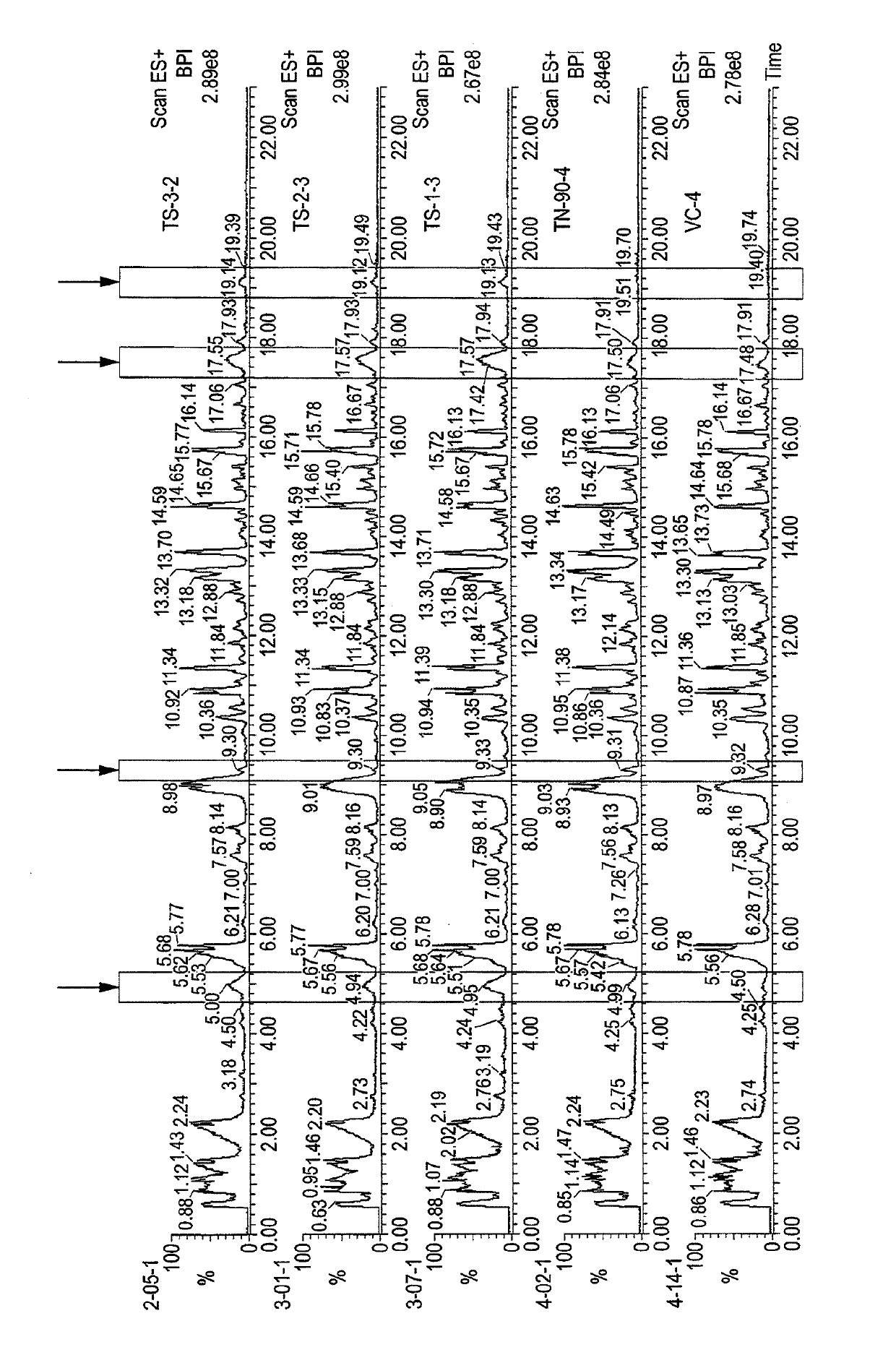Threonine synthase from nicotiana tabacum and methods and uses thereof
a technology of nicotiana tabacum and synthase gene, which is applied in the direction of lyase, tobacco, tobacco treatment, etc., can solve the problems of safety and regulatory concerns, significant increase in production costs, and adversely affecting the entire plan
- Summary
- Abstract
- Description
- Claims
- Application Information
AI Technical Summary
Benefits of technology
Problems solved by technology
Method used
Image
Examples
example 1
Identification of Tobacco Threonine Synthase
[0217]The tobacco threonine synthase gene is identified using tobacco EST sequences found in the Tobacco Genome Initiative. Another tobacco EST contig (NCBI_45312-v2pep-fl) close to tobacco threonine synthase is assembled from the NCBI EST sequences. This coding sequence has exactly the same length (1569 bp) as the tobacco threonine synthase. Data using DNA-microarray exon Affymetrix chips (sequence probes from NtPMIa1g193542e1) shows that tobacco threonine synthase is equally expressed in roots, trichomes, green and senescent leaves of N. tabacum. No major changes in gene expression levels were found between leaf of Flue-cured (K326, K399) and Burley (TN90, Bu64) tobacco. In addition, cold and cadmium stress does not affect tobacco threonine synthase expression levels, thereby indicating that this threonine synthase is very likely constitutively expressed in tobacco leaf
example 2
Overexpression of Cystathionine Gamma-Synthase (CGS)
[0218]Arabidopsis thaliana CGS (MT01, TAIR Accession AT3901120) is introduced under transcriptional control of the cauliflower mosaic virus 35S promoter into Burley tobacco TN90 via Agrobacterium tumefasciens using a classical leaf disk procedure as described in the literature. The kanamycin antibiotic selection gene is also inserted.
example 3
Silencing of Threonine Synthase Expression in Tobacco Plants
[0219]Using a DNA fragment of SEQ ID NO:1, primers are generated to silence NtTS in tobacco using a RNAi approach. The primers used are 5′-ctgaaatcgacagcgatgata-3′ (SEQ ID NO: 9) and 5′-caaccaatagctaacggagctt-3′ (SEQ ID NO: 10). The corresponding RNAi sequence is amplified from cDNA by reverse transcriptase-polymerase chain reaction (RT-PCR) and then inserted into the Gateway vector pB7GWIWG2(II) via an entry vector, exactly as detailed by the manufacturer (Invitrogen). This vector contains a promoter for constitutive expression (the cauliflower mosaic virus CaMV 35S promoter) of the transgene in all tissues of the plant and the kanamycin gene for kanamycin antibiotic selection on agar plates (100 mg / ml). The construct is then inserted into the genome of the Burley tobacco TN90 via Agrobacterium tumefasciens using a classical leaf disk procedure. From calli, individual lines are regenerated and selected on kanamycin. RNAi s...
PUM
| Property | Measurement | Unit |
|---|---|---|
| Tm | aaaaa | aaaaa |
| temperature | aaaaa | aaaaa |
| pH | aaaaa | aaaaa |
Abstract
Description
Claims
Application Information
 Login to View More
Login to View More - R&D
- Intellectual Property
- Life Sciences
- Materials
- Tech Scout
- Unparalleled Data Quality
- Higher Quality Content
- 60% Fewer Hallucinations
Browse by: Latest US Patents, China's latest patents, Technical Efficacy Thesaurus, Application Domain, Technology Topic, Popular Technical Reports.
© 2025 PatSnap. All rights reserved.Legal|Privacy policy|Modern Slavery Act Transparency Statement|Sitemap|About US| Contact US: help@patsnap.com

